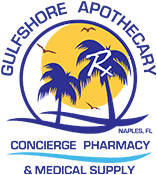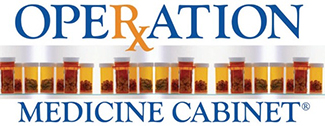Time has changed the way we generally look at food, pharmaceuticals, and other products that we either use or consume. There are many things that we don’t ordinarily focus on when searching for a product such as its inactive ingredients or even the manufacturer. Often these ingredients are overlooked, but they may contain hazardous additives and preservatives that are used to prolong the products shelf life, make it look more desirable, or capture a more delectable taste. Though “natural flavors” and preservatives seem like they enhance these products, they may not be the most health-conscious ingredients. Some of these “inactive” ingredients have even been linked to cancer prevalence and increases in mortality, which raises the question of why they were ever placed on the market in the first place. To aid in product selection, it is helpful to know some key words, and what they are, when skimming through an ingredient list.
Food Additives:
- Aspartame is a very common artificial sweetener found to be carcinogenic and neurotoxic. It is found in food and drinks labeled “diet” or “sugar-free” and is linked to Parkinson’s, Alzheimer’s, fibromyalgia, Multiple Sclerosis, and multiple emotional disorders.
- Monosodium Glutamate (MSG) is a flavor enhancer that has excitotoxic effects. This is found in high quantities in restaurant foods (Chinese mainly), salad dressings, soups, and various frozen foods. MSG damages the neurological pathway by overexciting cells, potentially to the point of destruction.
- Food Dyes (Artificial Color) are found in nearly all products we use and consume. They can be found in anything from pet food to maraschino cherries and many have been banned in the more health-conscious countries. Some specifically dangerous ones include Blue #1 and Blue #2 which may cause damage to chromosomes, Red #3 and Red #40 which have been proven to cause thyroid cancer and similar chromosomal damage, and Yellow #6 and Yellow Tartrazine which increased the number of kidney and adrenal tumors in laboratory animals and cause chromosomal damage as well. Red #40 and Yellow #6 have also been linked to hyperactivity in children which may be a potential reasoning to the increased ADHD diagnoses among children.
- Sodium Nitrate (may also be labeled as Sodium Nitrite) is the preservative used to “revitalize” most processed meats. It is also used as a color and flavor enhancer in these products that would ordinarily appear dull. It is metabolized in the digestive system to a highly carcinogenic (cancer causing) product that mainly affects the liver and pancreas once it reaches them via the blood stream.
- Butylated hydroxyanisole (BHA) and Butylated hydroxytoluene (BHT) are preservatives that are used commercially to keep foods looking, tasting, and smelling fresh. These highly reactive compounds are known as oxidants that cause a chemical reaction called oxidation. This produces free radicals, known to damage cells and create an environment that cancer thrives in. Oxidation is the same reaction that turns iron to rust. Anti-oxidants are found in blueberries, kidney beans, and many Vitamin C containing products and, as the name states, prevent oxidation.
- Tertiary butylhydroquinone (TBHQ) works opposite of BHA and BHT as an anti-oxidant. This is mainly used in iron containing products such as fish, unsaturated oils, and edible animal fats to prevent discoloration and rancid smells. TBHQ is not only used in food, but is often added to perfumes to increase stability and decrease the rate of evaporation and in biodiesel fuel to reduce oxidation. Often, this additive is used in conjunction with BHA for added preservation. Doses of TBHQ that are added to products tend to vary, but the FDA set a “safe” upper limit that can be included in foods of 0.02% of the fat content of the food. Fish on the other hand has a much higher “safe” upper limit of 1 gram (g) of TBHQ per kilogram (kg) of frozen fish or fish product. So far, trials have found combatant information on the true harms of TBHQ. Studies have determined that long term use of TBHQ can have carcinogenic effects, mainly in the stomach. Other studies have shown that the anti-oxidant component of TBHQ has caused the opposite effect. A possible link between TBHQ and food allergies is still being conducted.
- Potassium Bromate (KBrO3) is an extremely powerful oxidizer that is added to flour, bread, and rolls to increase the volume and strength of dough. Although in most cases it is used up during the baking process, low cooking temperatures, incomplete cooking, and too much Potassium Bromate in the flour may leave some active in the bread. Even a small amount left over may be harmful as ingestion of large amounts has led to acute renal failure and persistent hearing loss. The International Agency for Research on Cancer (IARC) has classified this as a class 2B carcinogen, indicating that this additive is a possible cancer causing agent in humans.
- Potassium Iodate (KIO3) is another strong oxidizing agent. It is added to food and sources of nutrients (such as baby formula) as a prevention technique and treatment for iodine deficiency and goiters. Potassium iodate is also used as a maturing agent in baking, similarly to Potassium Bromate. This medication is regularly stored in tablet form in Utah and Idaho due to its use as a protective agent against nuclear radiation. It saturates the body with a stable source of iodine prior to exposure to radiation, which would cause accumulation of radioactive iodine. Due to the corrosive nature of this medication, it has the potential to cause nausea, vomiting, diarrhea, abdominal pain, and even vision loss at higher doses. Although only nausea is seen at the “therapeutic” dosing, much more severe toxicities are witnessed when taken in excess.


